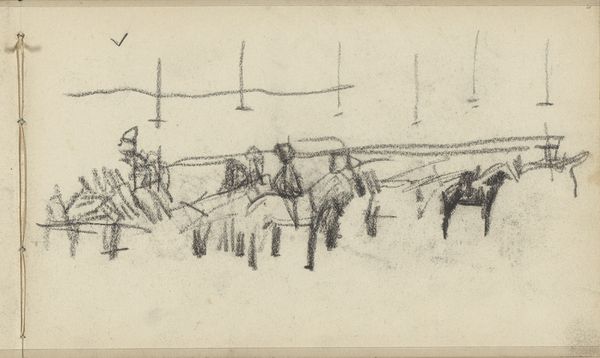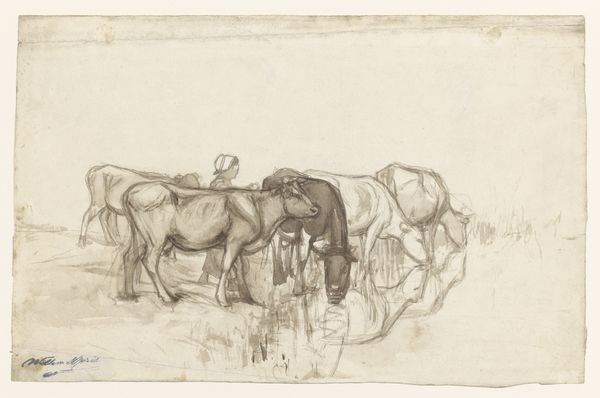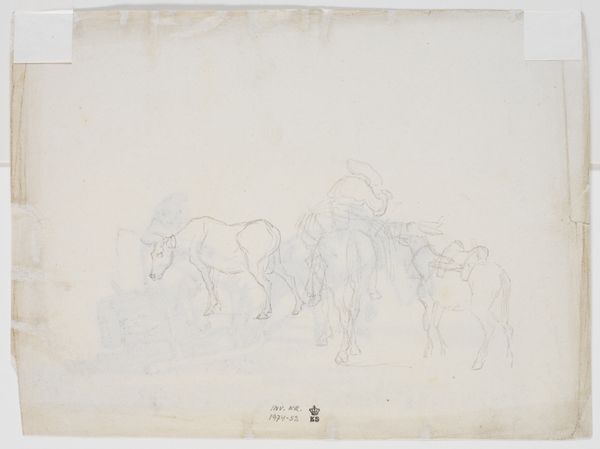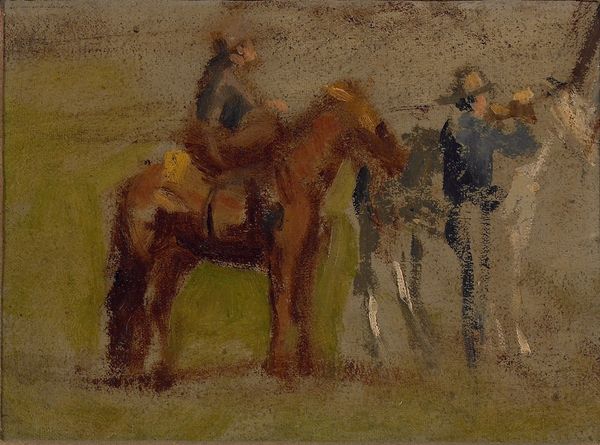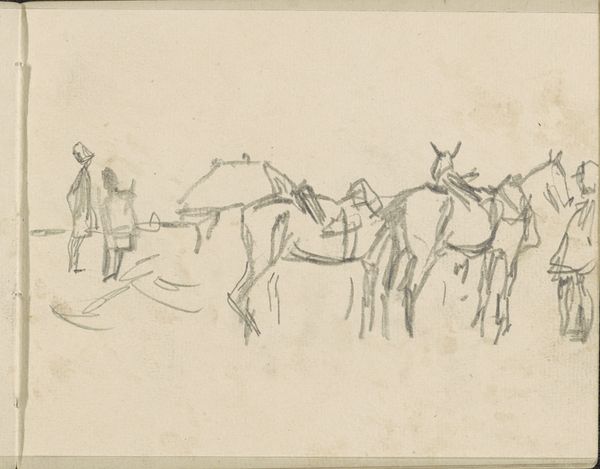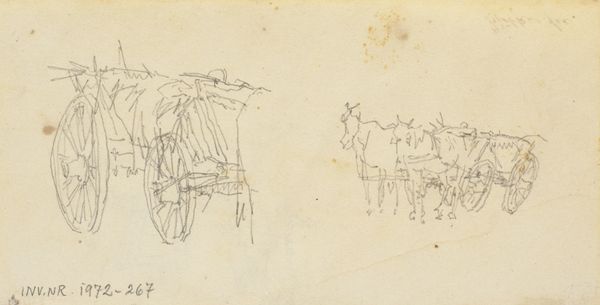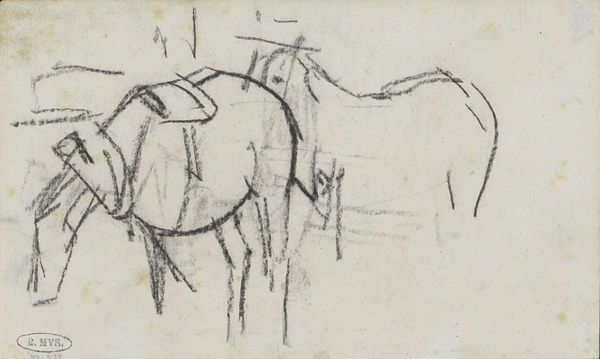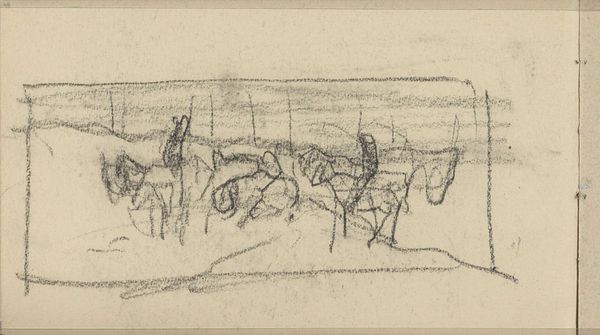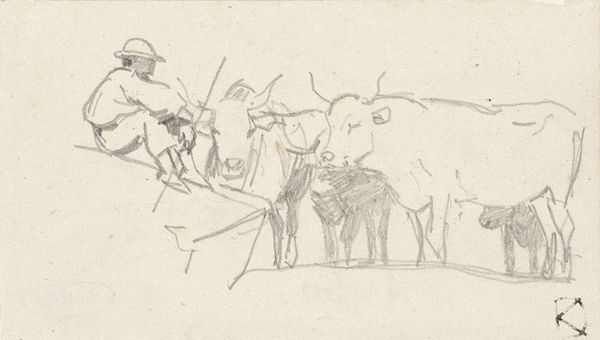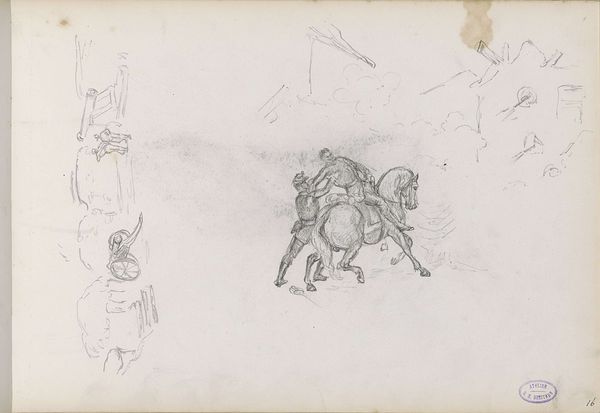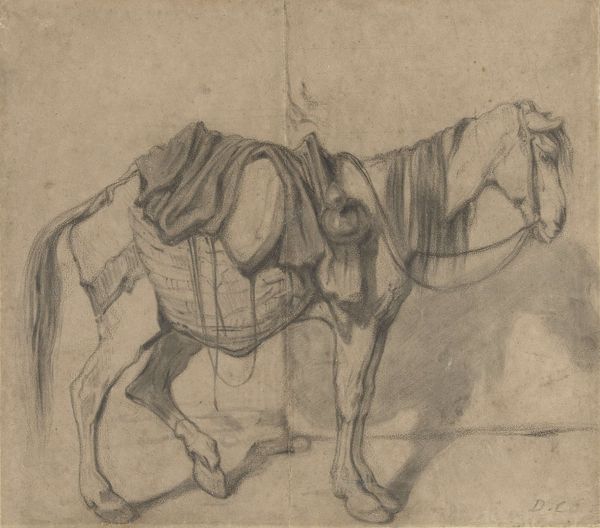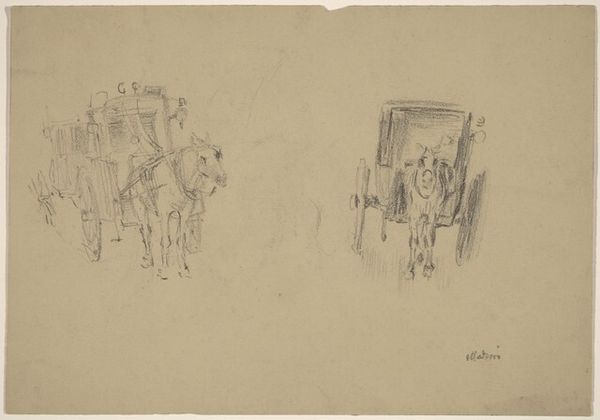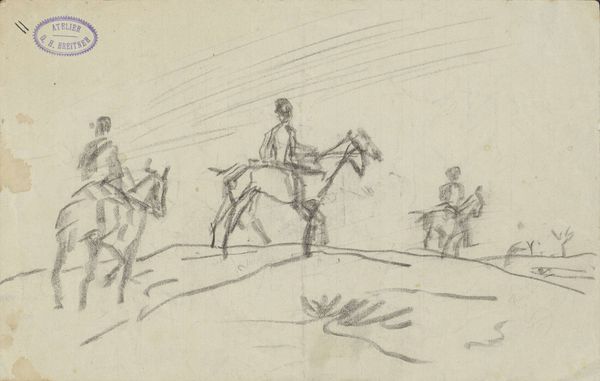
Dimensions: height 27.5 cm, width 39.5 cm, depth 1 cm
Copyright: Rijks Museum: Open Domain
Curator: Immediately I'm seeing a feeling of movement, as though someone quickly captured the scene just before it disappeared. I wonder if the artist even finished. Editor: That feeling makes sense, given what we know of this watercolor drawing by George Hendrik Breitner, titled "The Rokin," dating from about 1880 to 1923. It is indeed quite impressionistic. Curator: Yes, impressionistic is the perfect word. I'm seeing the horse mostly. Do you think that horses are in the center of the narrative? Editor: Maybe not center-center, but they definitely hold symbolic weight. Horses often stand for energy and movement but, historically, they represent power, war, even the aristocracy. Here though, rendered with such swift strokes and in such a mundane setting, they're less about dominance, and more about the everyday rhythms of city life, the working class, I guess? Curator: You’re right! And the setting itself seems so blurry! Editor: It's like he is suggesting we shouldn't romanticize them because he represents that scene in a way we might have seen already so many times that it faded away. What sticks with me is that it really challenges classical compositions and expectations, but in that same time, that old life keeps going on. It becomes history but feels normal like every day. Curator: Do you think it's more like the Rokin has its own, unique type of light or more likely the artist's? Editor: I'd say Breitner found something remarkable in the everyday and the art seems effortless. I love how he used his technique to remind us what he considers most essential. Curator: Well, this made me wonder about a thing: who were all the regular anonymous folk who, during those same days, went by at that precise time in that very location? It is indeed mysterious what they thought and desired… I want to make art about the everyday from now. Editor: Funny, I just feel a renewed sense of continuity—this ability art has to compress time and evoke presence.
Comments
rijksmuseum about 2 years ago
⋮
Horses were Breitner’s first subject and remained a life-long passion. This sketch shows how he made a preliminary lay-out of a cityscape. He did this on the spot, using a small panel that fit into the lid of his painter’s box. He depicted the two horses and the horse tram, as well as the contours of the houses, with swift strokes in brown tints over the summary underdrawing.
Join the conversation
Join millions of artists and users on Artera today and experience the ultimate creative platform.
